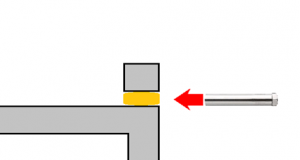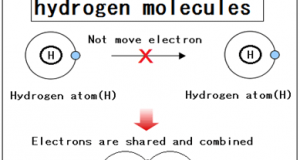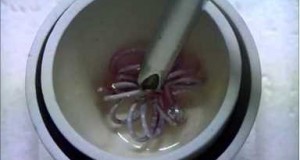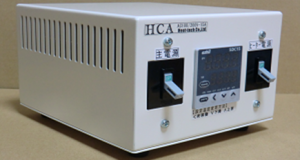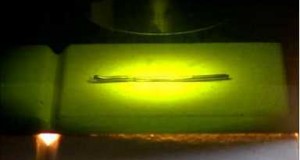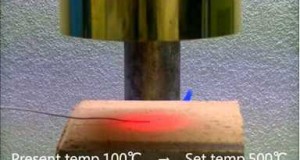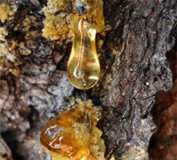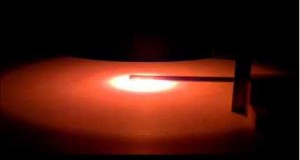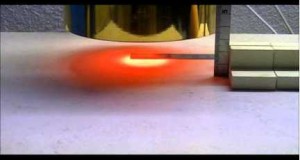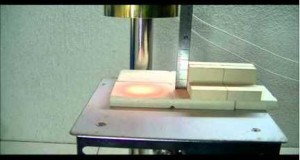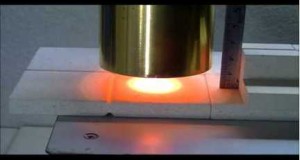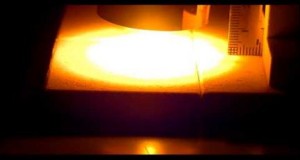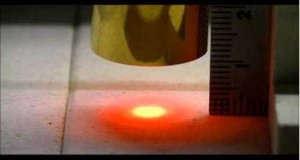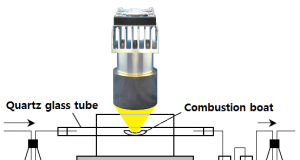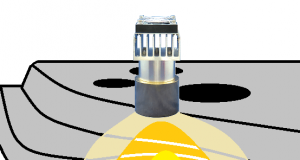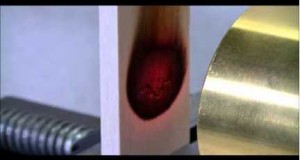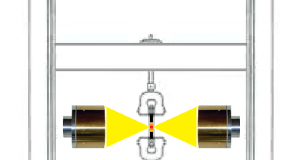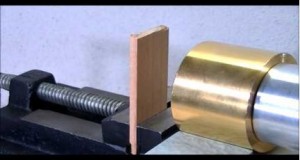[ Problem Point ] Shortening of tact time of the adhesive sealing process has been required. [ ⇒Kaizen Point ] We dried seal by the Air Blow Heater. It is the drying time is shortened by a double effect of ...
Read More »Basic knowledge of Resin heating 3.The kind of resin-1 The type of bond and molecular
Atoms will assemble and be a molecule. Between the molecules and molecular force called “intermolecular force” is working, and then solidified (crystallization). The chemical bond atom is a like to win the closed-shell structure in search of stable reaction, from ...
Read More »Heating dissolution of aluminum wire
This video is a Heating dissolution of aluminum wire by the Halogen Point Heater. Please check the following site for more information.
Read More »Basic knowledge of Resin heating 2.History of Resin-3 Chronology
Henri Braconnot (May 29, 1780, Commercy, Meuse – January 15, 1855, Nancy ) 1832 Henri Braconnot Nitrocellulose discovery Such as starch and cotton is dissolved in warm to put in concentrated nitric acid, it was found a white powdery nitrocellulose ...
Read More »Thermocontroller built-in heater controller
[Attention] HCA series can not control the halogen heater. The control of the halogen heater recommends HCV series, HHC2 series, and SSC series. HCA has a built-in high-performance temperature controller, handling is easy. *HCA has initially set to AT2 (Stability). ...
Read More »Basic knowledge of Resin heating 2.History of Resin-2 Invention of synthetic resin
The first-ever synthetic resin Celluloid of the first time in history industrialized synthetic resin, was born as an alternative material of billiard balls are made from ivory. From ivory elephant one animal, it is said that it has not been ...
Read More »Heating of wire solder by the Halogen Point Heater HPH-35
This video is a demonstration to confirm the focus diameter of the Halogen Point Heater HPH-35. Please check the following site for more information.
Read More »Examples of PID Auto-tuning of The Halogen Point Heater by the HPH-120
This video is a demonstration to confirm the Auto-tuning of the Halogen Point Heater by the HPH-120 Please check the following site for more information.
Read More »Heat-tech News Letter – Vol. 009
■□■━━━━━━━━━━━━━━━━━━━━━━━━━━━━━━■ □■ Heat-tech News Letter – Vol. 009 2015-07-15 ■━━━━━━━━━━━━━━━━━━━━━━━━━━━━━━■□■ □ INDEX ■1. Guidance of the new product ■2. Guidance of new applications ■3. Movie Library ■4. Support Information ■5. Editor’s note ┏━━━━━━━━━━━━━━━━━━━━━━━━━━━━━━━━━┓ ■1. Guidance of the new product ...
Read More »Basic knowledge of Resin heating 2.History of Resin-1 Polymer, Resins and Plastic
Synthetic resin In ancient times, “resin” was meant to solid tree sap, such as pine resin and cedar resin. The word “resin” has been applied in the modern world to nearly any component of a liquid that will set into ...
Read More »Focal length and focus diameter of the Halogen Pont Heater HPH-160/f40
This video is a demonstration to confirm the focus diameter of the Halogen Point Heater HPH-160/f40. Please check the following site for more information.
Read More »Basic knowledge of Resin heating 1.Reference books
Reference books were published in Japan. Therefore, it will be written in Japanese. 高分子のはなし / 功刀滋著 /三共出版/2014 ナノテク材料 : ポリマーナノコンポジット絶縁材料の世界 / 先端複合ポリマーナノコンポジット誘電体の応用技術調査専門委員会編 /電気学会/オーム社 (発売)/2014 トコトンやさしいプラスチック成形の本 / 横田明著 /日刊工業新聞社/2014//B&Tブックス/今日からモノ知りシリーズ プラスチックハードコート材料の最新技術 / 矢澤哲夫監修 /普及版/シーエムシー出版/2014//CMCテクニカルライブラリー:523/新材料・新素材シリーズ 生物とコラボする : バイオプラスチックの未来 / 工藤律子著 /岩波書店/2013//岩波ジュニア新書:759 プラスチックスの上昇と下降、そしてメロンの理力(メジャー・フォース) : ...
Read More »Basic knowledge of Resin heating – Table of contents
This online seminar is intended to be illustrative and clarity the mechanism of the resin heating. 1.Reference books 2.History of Resin-1 Polymer, Resins and Plastic 2.History of Resin-2 Invention of synthetic resin 2.History of Resin-3 Chronology 3.The kind of resin-1 The type of bond ...
Read More »Focal length and focus diameter of the Halogen Pont Heater HPH-120/f45
This video is a demonstration to confirm the focus diameter of the Halogen Point Heater HPH-120/f45. Please check the following site for more information.
Read More »Focal length and focus diameter of the Halogen Pont Heater HPH-60/f60
This video is a demonstration to confirm the focus diameter of the Halogen Point Heater HPH-60/f60. Please check the following site for more information.
Read More »Focal length and focus diameter of the Halogen Pont Heater HPH-60/f30
This video is a demonstration to confirm the focus diameter of the Halogen Point Heater HPH-60/f30. Please check the following site for more information.
Read More »Focal length and focus diameter of the Halogen Pont Heater HPH-35
This video is a demonstration to confirm the focus diameter of the Halogen Point Heater HPH-35. Please check the following site for more information.
Read More »Focal length and focus diameter of the Halogen Pont Heater HPH-18
This video is a demonstration to confirm the focus diameter of the Halogen Point Heater HPH-18. Please check the following site for more information.
Read More »No.26 Metal analysis of incineration waste
[ Problem Point ] There was no one that can be easily high-temperature heating in a tabletop until now. [ ⇒Kaizen Point ] Could be inexpensively experimentally because using the Halogen Point Heater. Power is so 450W, It is able ...
Read More »Heating of wood series 7 – Balsa
This video is a Heating of Balsa by the Halogen Point Heater. Please check the following site for more information.
Read More »No.25 Drying after Precure sealer application
[ Problem Point ] Equipment was big by high-frequency heat and layout change was difficult. [ ⇒Kaizen Point ] Could be simplified mechanism since using the Halogen Point Heater. Teaching for using a halogen light was also easy. Moreover the ...
Read More »No.24 Detailed examination of the solar panel (photovoltaic module)
[ Problem Point ] Performance of high quality has been desired to increase the power generation efficiency. [ ⇒Kaizen Point ] It is able to test a pinpoint defects in solar panels. It is examined by high-speed non-contact due to ...
Read More »Heating of wood series 6 – Sengon laut(Albizzia Falcata)
This video is a Heating of Sengon laut(Albizzia Falcata) by the Halogen Point Heater. Please check the following site for more information.
Read More »No.23 Temperature setting of the tensile testing machine (non-magnetic material and high temperature)
[ Problem Point ] The equipment which can heat a nonmagnetic material to high temperature was required. [ ⇒Kaizen Point ] The use of a Halogen Point Heater that can be high-temperature heating in a short time. Heating process energy ...
Read More »Heating of wood series 5 – Agathis
This video is a Heating of Agathis by the Halogen Point Heater. Please check the following site for more information.
Read More » HEAT-TECH Best Technology Online Shop
HEAT-TECH Best Technology Online Shop 
